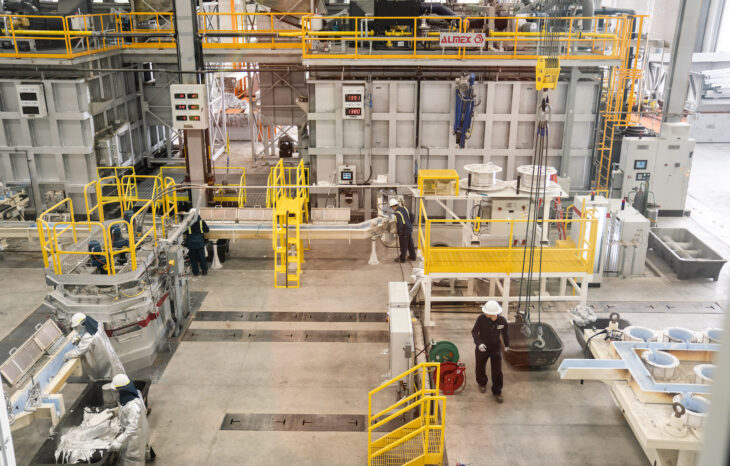Western Extrusions, located in Carrollton, TX, manufactures and supplies quality aluminum profiles to a variety of industries and markets, including building and construction, transportation, consumer durables, electrical, and distribution. Recently, the company completed the construction and start up of its first casting facility. The new casthouse empowers the company to have control over its own billet supply, as well as enabling an increase in recycled content, which more customers are demanding.
“Aluminum extrusion demand is often variable, and the past year has proven this market variability again,” said Bennett McEvoy, owner of Western Extrusions. “We have excellent partnerships with our current billet suppliers, and we will continue to buy from these key vendor partners. However, we’ve seen the impact that volatile billet markets can have on production, and we wanted to add an enhanced layer of control to our raw material supply in order to better serve our customers.”
Company Profile
Western Extrusions was founded in 1979 by Patrick McEvoy Jr., who launched the company with a strong emphasis on customer service. In the subsequent decades, McEvoy grew the company by continuously reinvesting in its people and equipment in order to match the needs of its customer base. Today, the business is run by Patrick’s sons, Bennett McEvoy and Patrick McEvoy III.
At its current 1 million sq ft facility in Carrollton, Western Extrusions is centrally located to efficiently serve the whole of the U.S., Canada, and Mexico. The company operates five extrusion presses, with diameters ranging from 7 to 14 inches. This makes it possible for the company to produce a wide variety of shapes, from small architectural trim extrusions to profiles up to 19 inches wide. In addition, the company provides on-site finishing and fabrication services, including anodizing, bright-dip finishing, painting, mechanical polishing and brushing, cut-to-length, CNC machining, thermal break lines, and assembly. “Western Extrusions simplifies our customer’s supply chain by being a one-stop shop for aluminum needs,” said McEvoy.
New Casthouse
Since this is the first casthouse that Western Extrusions has operated, one of the first actions taken by the company in planning the project was to recruit proven talent in aluminum billet casting as part of its management team. This led to the appointment of Max Gorman, who served in several managerial roles within Western before being named president in January 2018. In this role, he has supported the planning and execution of the new casthouse.
The Western Extrusions facility is located on 75 acres of contiguous land in Carrollton. This allowed the company to house its new casting facility on the same site as its other operations, supporting the sustainability of the company’s supply chain. “It was important to us to have operations contained on the same site to reduce the transportation of scrap,” explained McEvoy. “In the past, up to 3,000 trucks a year were being utilized to transport internal scrap off-site and to ship billet back to Western. Housing our casting facility on-site helps us in offering our customers greener products. Additionally, reducing the number of scrap trucks on the road eliminates the chance for trucking accidents on those specific hauls.”
Western Extrusions’ existing facility was already operating a homogenizing furnace. Therefore, the company elected to design and construct a new building for the casthouse that is adjacent to the existing building in which the homogenizing furnace is housed. One of the key factors in the design process was ensuring the safety of the personnel and operators. Therefore, equipment was selected with a high level of automation in order to establish the safe operation of the casthouse.
“Western went through quite a process to qualify and select the new equipment,” explained Gorman. “We visited many facilities in the U.S. and Europe to help us decide on the majority of the equipment. In addition, outside casting consultants and experts were utilized to make final decisions. In all cases, it was truly a collaborative process between the experts, consultants, engineers, and Western management.“
The heart of the new casting facility is the new DC billet casting line, which was supplied by Almex USA Inc. In addition to supplying two melting furnaces, degassing and filtration systems, the casting machine, and automation systems, the company also provided a complete casthouse water management system, dual-spool grain refining rod feeder, automated emergency abort launder, and fully automatic casting pit safety cover.
“Almex was instrumental in helping us with various decisions throughout the project, from the design phase and start of building construction to the equipment installation and start-up of equipment,” noted Gorman. In addition, Almex is providing equipment, process and technology training and support throughout the start of production.
The new casthouse includes two 110,000 lb capacity melting furnaces (Figure 1). Both furnaces are equipped with ultra-low NOx and energy efficient regenerative combustion systems and magnetic stirring systems, which provide improved melt efficiency and temperature and chemical composition homogeneity. Metal purity is achieved through the patented LARS® molten metal degassing and purification system, along with the FILTREX™ ceramic foam filtration system. This ensures that the molten metal arrives to the billet table with extremely low hydrogen content and free of inclusions.
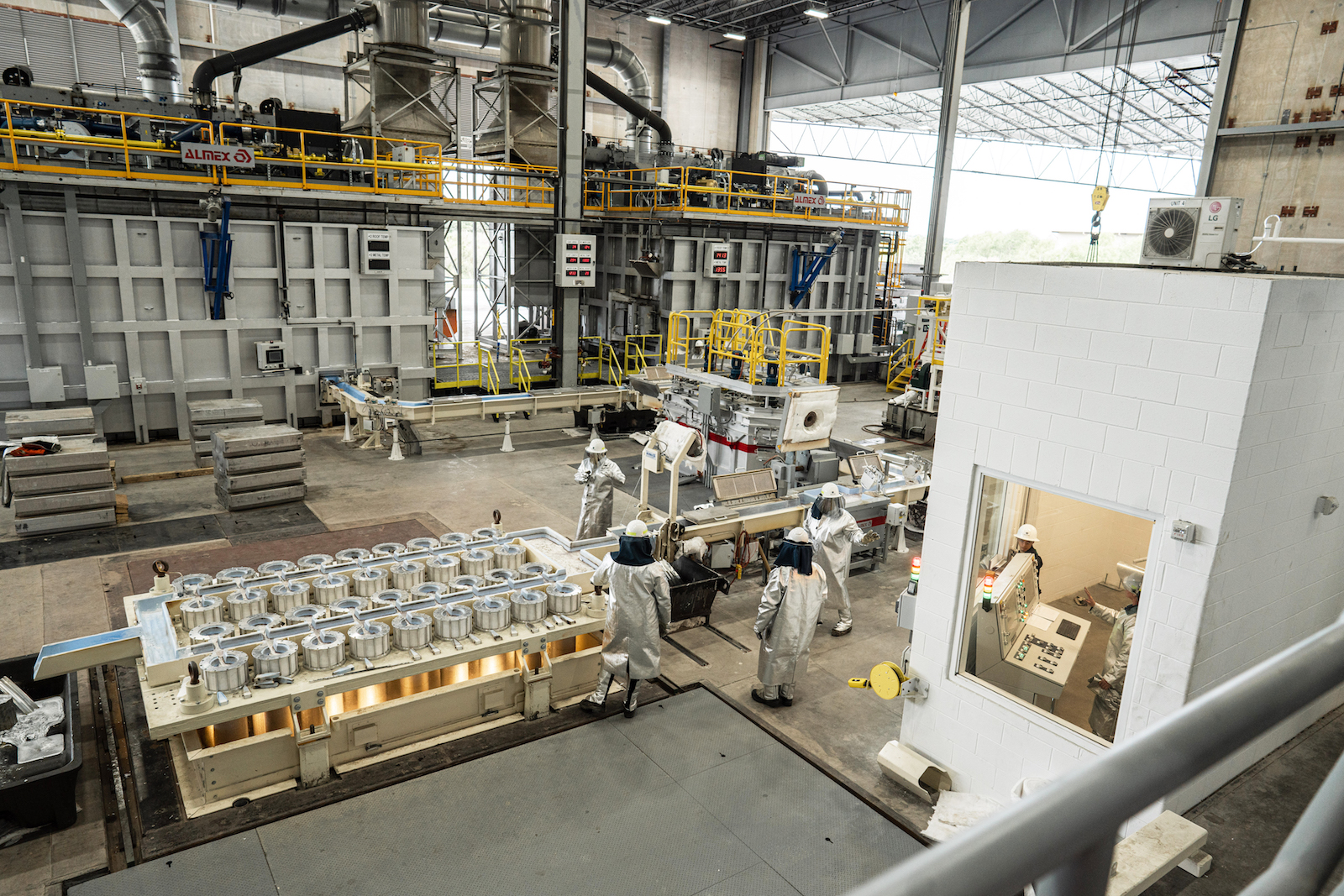
Casting of the billet is performed on a MEGA™ double acting DC casting machine, integrated with peripheral casting pit devices. This is outfitted with three EXCEL™ and OPTIMA™ billet casting tables for 10 inch, 12 inch, and 14 inch billet (Figure 2). The casting process is facilitated by the CASTRIGHT® III automation and control system, which seamlessly integrates all process equipment together, so that they can function cohesively. It also provides an array of supervisory control and data acquisition (SCADA) features for plant supervisors and management. This system will ensure that casting recipes are followed, allowing Western Extrusions to consistently cast quality aluminum billets safely and efficiently. Quality of the final product will be further ensured by the performance of chemistry checks throughout the process, as well as validation of hydrogen levels and ultrasonic inspection for cracks.
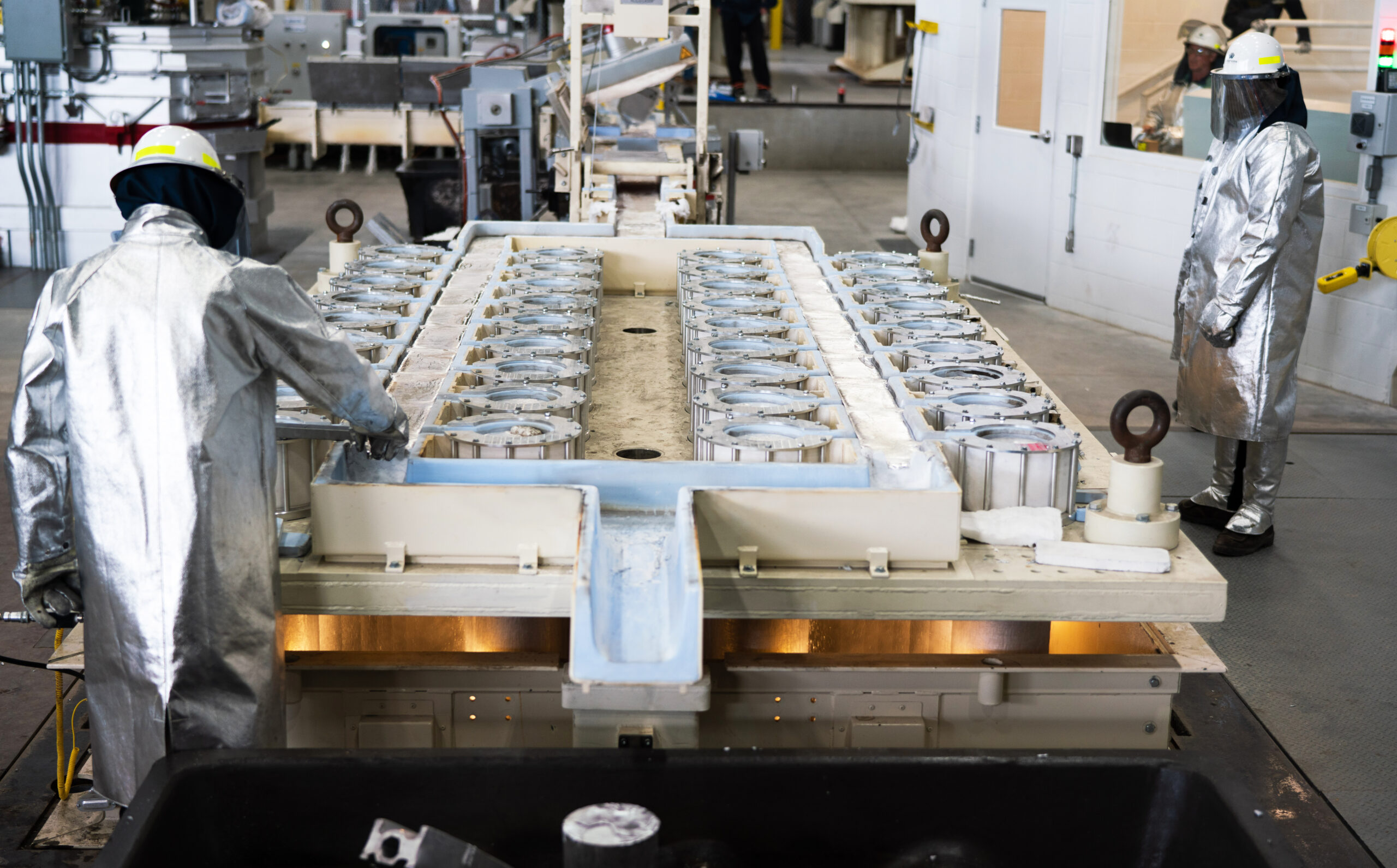
Another benefit of the automation systems is the improved safety of personnel within the facility. “Our commitment to safety extended into every aspect of the casthouse project,” explained Gorman. “We feel strongly that automation will contribute to a safer process by keeping employees further away from molten metal.”
In order to ensure the efficiency and help control the homogeneity of the melt, Western Extrusions installed a MagStir™ permanent magnet stirring device from Zmag America on their new furnaces (Figure 3). “We spent a lot of time on this decision, as operating cost and equipment reliability were high on our list,” said Gorman. “After discussions with various suppliers, one of our consulting casting experts helped make the final decision. Ultimately, Western felt that the permanent magnet was superior to other options explored.”
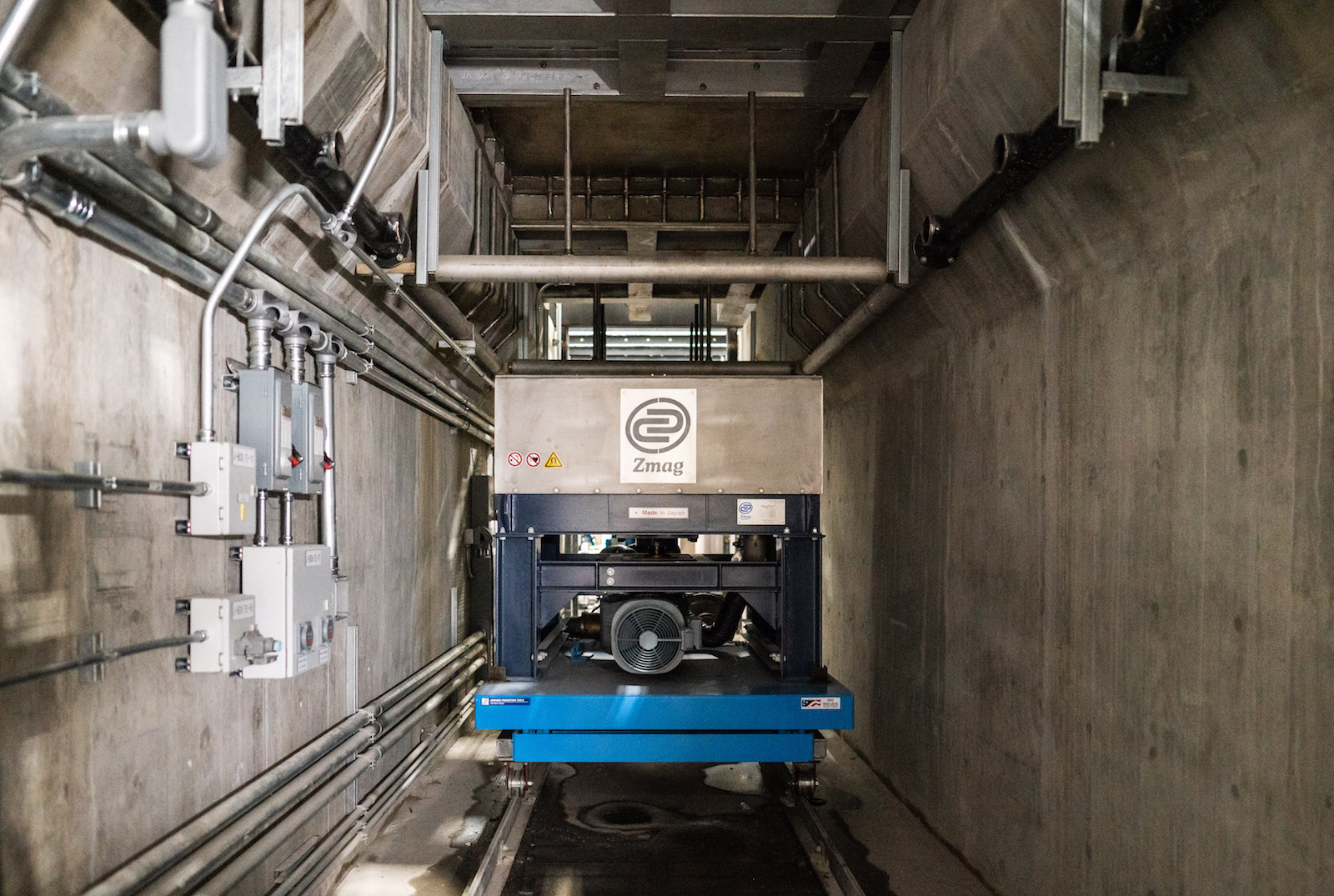
The MagStir features a straightforward configuration consisting of its main body with standard gearmotor, simple control panel, and small air-cooling blower. Due to the zPMC™ (Zmag Permanent Magnetic Circuit) technology, the stirrer only consumes about 10 kW per hour of electricity (including its air cooling blower). The permanent magnet stirrer is virtually maintenance free, operating almost invisibly in the background while silently contributing to the productivity of the furnace. Working closely with Western Extrusions and Almex, Zmag installed the MagStir in three days and provided additional guidance on the use and function of the system.
Western Extrusions uses a mixture of aluminum scrap (both in-house and scrap from regional customers) and prime ingot for the production of their billet. Prior to being fed into the melt, the aluminum ingot needs to be preheated to prevent any moisture from entering the melt. Belco Industries Inc. supplied two ingot pre-heating ovens, capable of operating at temperatures up to 800°F using low NOx natural gas burners. Each oven features a cross air flow design and a load capacity of 35,000 lbs. The ovens are equipped with motor-operated vertical doors. A heavy duty cart loads the material into the oven using a heavy chain tow conveyor. The ovens are controlled by an Allen Bradley Compact Logix processor located in the main control room. Each oven has its own PanelView screen to run the heating recipes and to control the opening and closing of the doors, along with the cart and chain conveyor.
RIA Cast House Engineering GmbH supplied autonomous furnace charging and skimming machines for the new casthouse. The rail-mounted precision equipment was designed, developed, and fabricated to autonomously serve both melting furnaces using advanced artificial intelligence (AI) technologies. The equipment provides high reliability and durability, with a low carbon footprint.
The charging machine is capable of carrying and evenly distributing up to 33,000 lbs (15 tonnes) of aluminum scrap over the full bath area in less than 90 seconds (Figure 4). AI-operated, air-cooled cameras are mounted inside the furnace in order to monitor the state of the melt and will trigger the charging process as necessary.
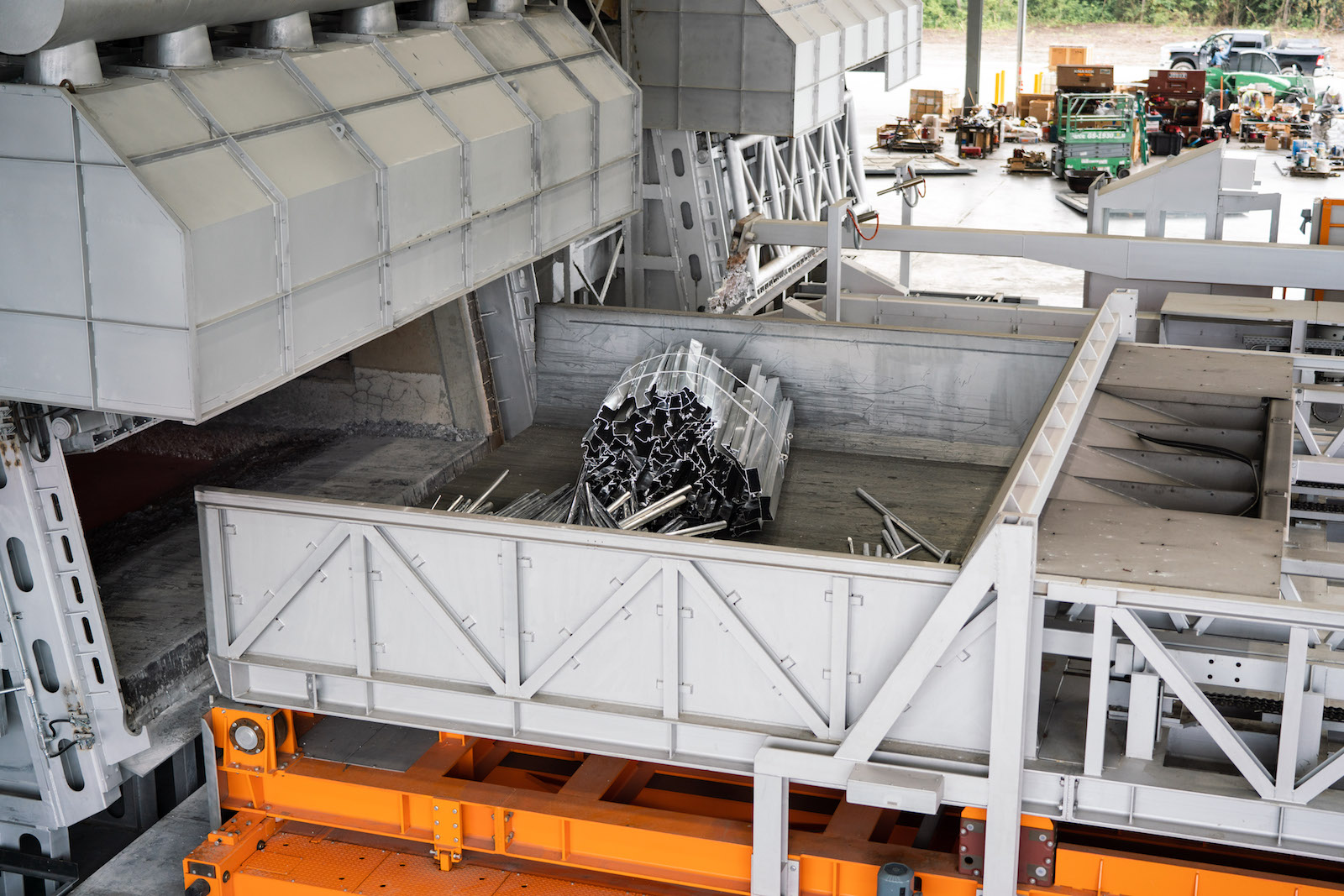
The skimming machine also incorporates AI cameras for autonomous operation and in-furnace dross processing (Figure 5). Skimming is based on the location of the dross in the furnace, which is determined by the cameras. As a result, the machine is able to carry out faster skimming in a more repeatable fashion, removing the dross but leaving the aluminum in the furnace, where it belongs. In addition, it reduces the amount of refractory damage within the furnace and helps to ensure the safety of operators.
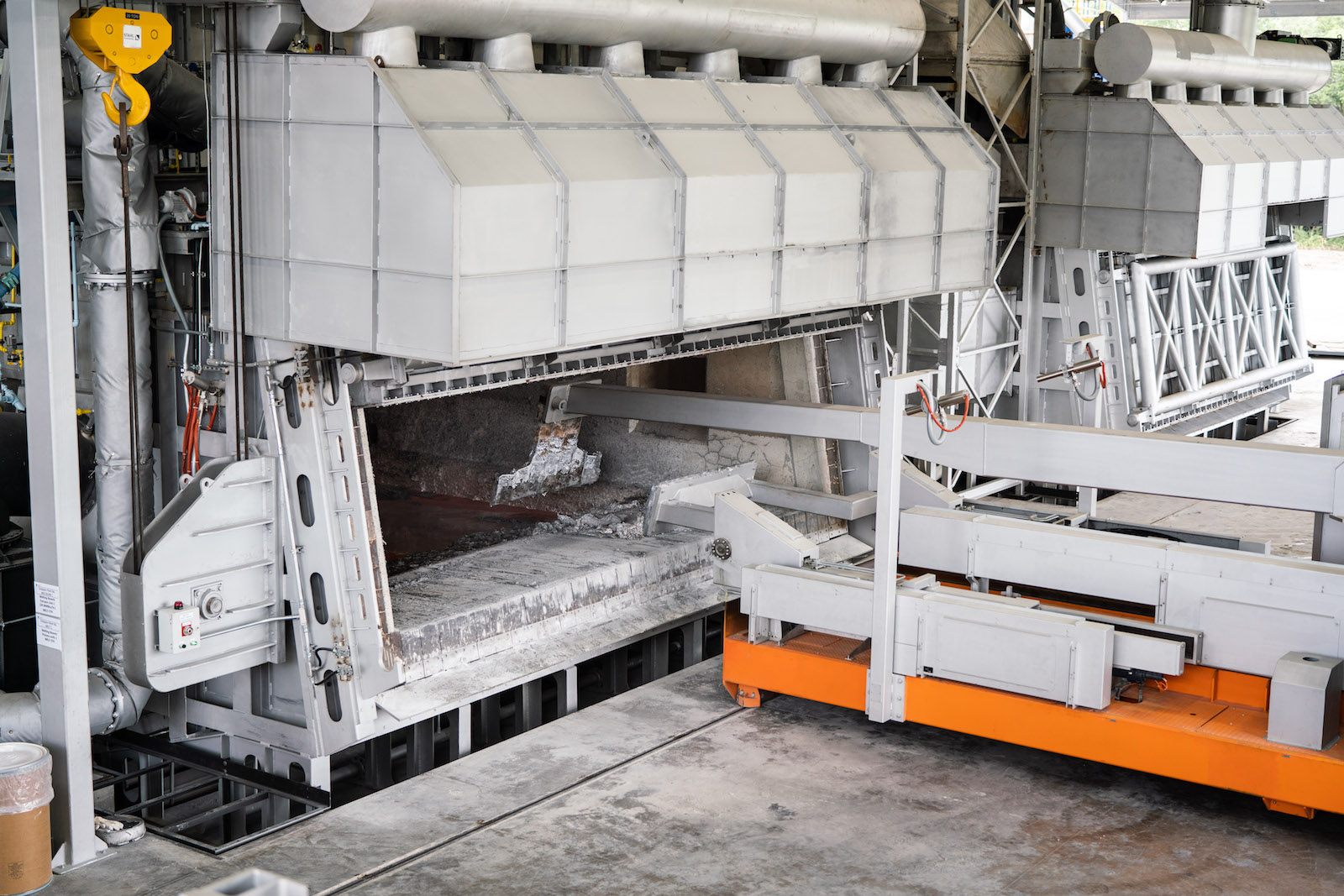
“Automation on the charging side of the furnace was an important consideration for the safety of our employees as well as productivity,” explained Gorman. “We felt that the rail mounted charging and skimming equipment from RIA would give us the best charging time, safety, and equipment reliability, as well as providing extended furnace refractory life.“
The next stage of automation in which Western Extrusions invested is the handling of the log after it is removed from the casting pit. For safety reasons, the company did not want to use any forklift trucks within the casting facility. As a result, the company worked with Granco Clark, Inc. to develop and install equipment that would automatically handle the sawing of the cast logs and then transport them to the adjacent homogenizing building (Figure 5).
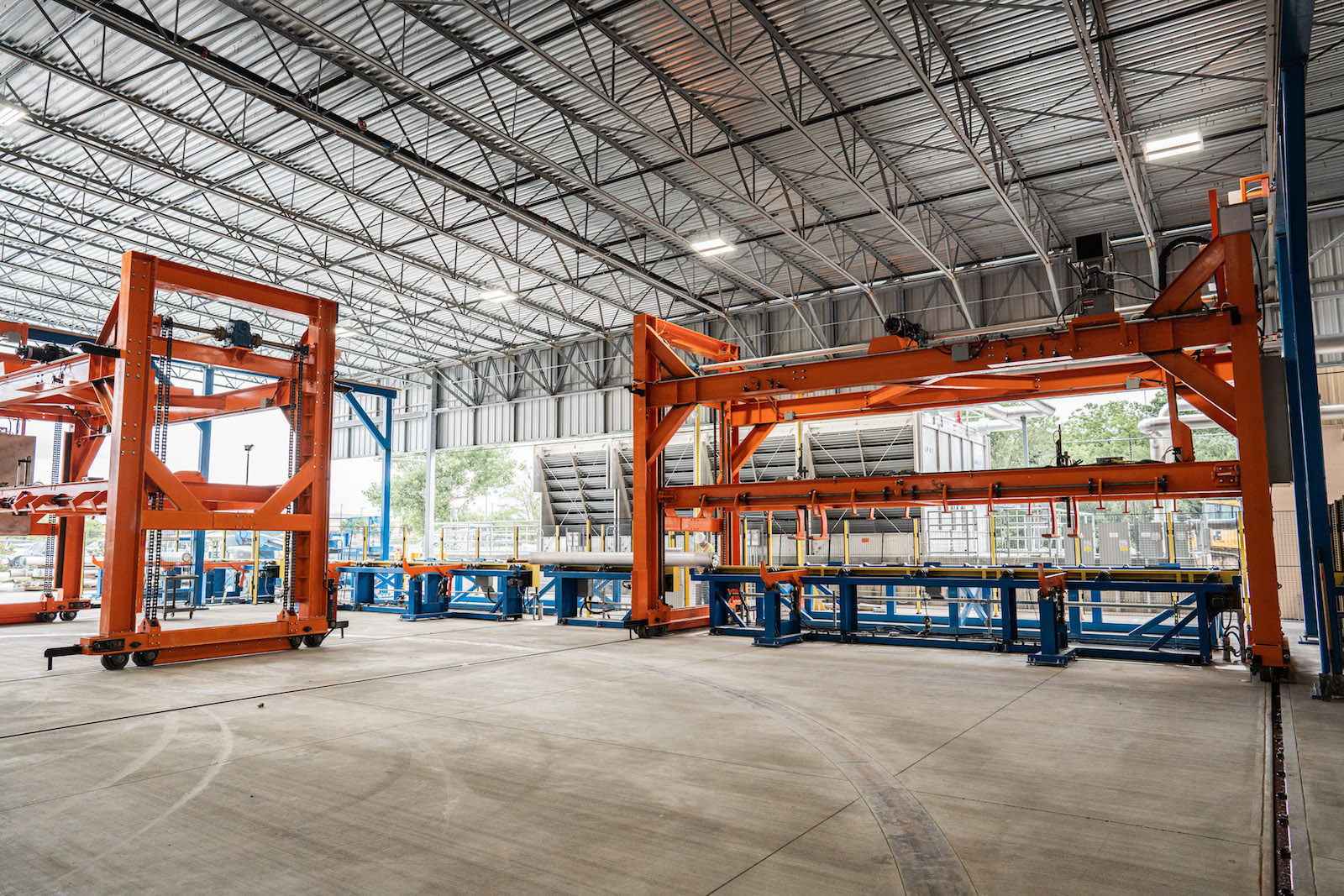
After the aluminum logs are lifted out of the casting pit, they are lowered horizontally onto a storage and transfer table designed to hold up to 36 logs that are 10 inches in diameter. Each log is processed through ultrasonic inspection before being transferred to the saw, which crops the ends of the log by around 3–10 inches. A chip collector and scrap conveyor manages the scrap material for later recycling. Once the ends have been cropped, each log is automatically stamped with an alloy code and cast number.
After sawing, the logs are moved via a powered roll surge conveyor until they reach one of the two gantry stacking systems positioned in-line with the two pads for homogenization. Each stacker has its own unload table capable of holding up to three 14 inch logs. The unload tables feature hydraulically pivoting roll down arms, which remove logs from the conveyor. The stacking system picks up the logs from the unload tables and places them onto the homogenization pad. Each layer of logs on the homogenizing pad is separated by steel spacers, which are also positioned on the stack by the stacking system. The unload table also has the ability to eject logs that have been rejected following inspection. The rejected logs are transported to a reject station, which is in-line with the unload tables.
Once the stack on first pad is completed, the homogenizing oven travels over the stack, the doors close, and the homogenizing process starts. While the homogenization process is taking place, the second stack is being prepared. In this way, the next homogenizing cycle can take place almost immediately after the completion of the previous one.
Following homogenization, a fan bank is automatically moved into position alongside the stack in order to cool the homogenized logs. Once the material is sufficiently cooled, the gantry stacker, which was used to build the stack, is also used to destack the load onto a table, where the log bundle is manually banded and removed via forklift and transported to storage for use in the company’s extrusion operations.
Conclusion
With the startup of its new casthouse, Western Extrusions is able to achieve better control over its own billet supply, while being able to meet customer requirements for increased recycled content and specific alloys and chemistries. The center point of the company, however, is its people who will benefit from the sophisticated automation and safety systems in place within the new facility.
Editor’s Note: This article first appeared in the June 2021 issue of Light Metal Age. To receive the current issue, please subscribe.

